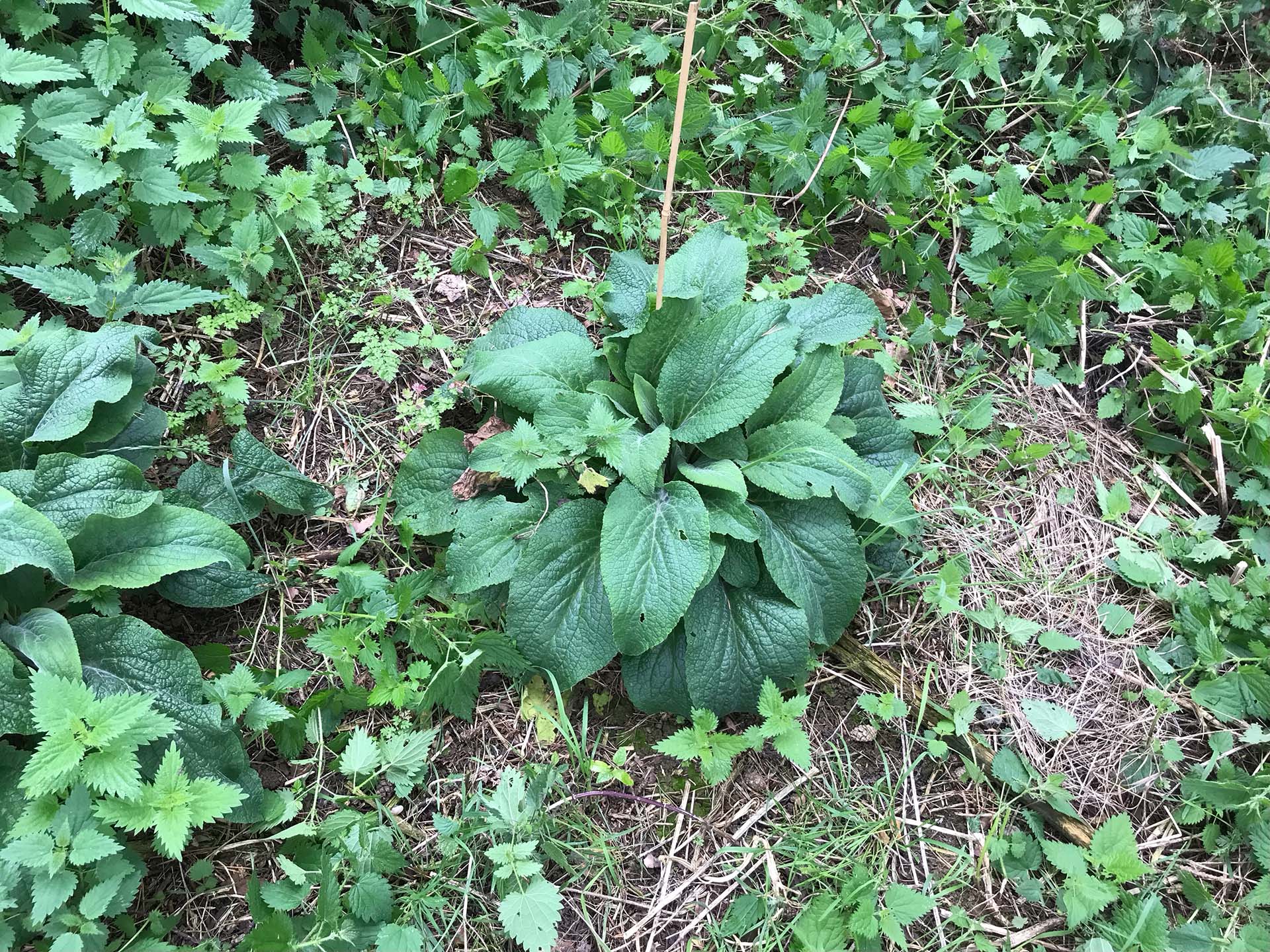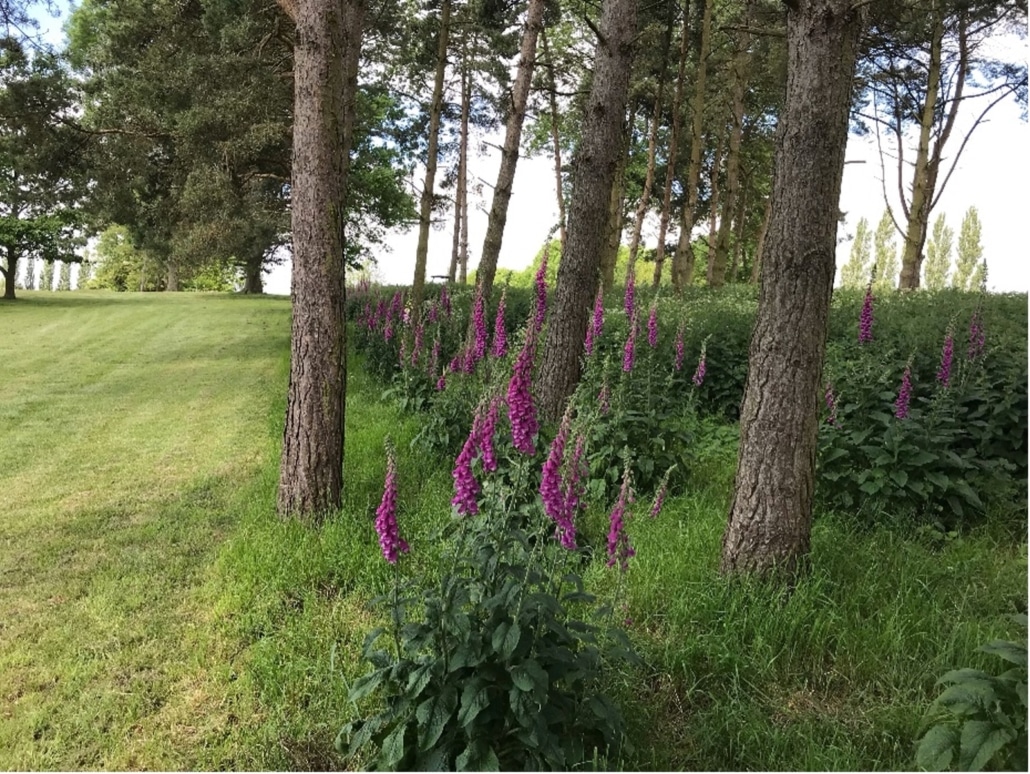Foxgloves in the Conifers
For the past five years a small team of volunteers at Market Harborough Golf Club have, with the support of the club’s board of directors, been following a series of environmental policies and projects ranging from single use plastics and recycling, to LED lighting and on course environmental enhancements. Working closely with the Greens Committee and the Greens Team led by head green keeper Lee Wenlock, we have reviewed some elements of our mowing regime in respect of mowing heights and timings, and have identified and have protected several areas where, by volunteer managed plantings and seeding, we have sought to establish a wider range of plant species and bio-diversity.
In several areas this is already beginning to show through with stands of daisies and wild flowers, and next spring should give us a good show from the over 2,000 bulbs we planted last winter.
However, in one specific area of the course we have a fairly dense plantation of conifers which gave us the opportunity to see if it might be possible to begin to eat into the ecological gloom of the woodland undergrowth by establishing an area of foxgloves to the south-facing fringe of the wood.
Through the course of late summer and autumn 2022, we harvested a quantity of foxglove seeds from established and sustainable sources and sowed some of these into trays before eventually potting them on into large pots and containers. As conditions allowed we then planted the individual plants out in to the woodland fringe and managed their establishment by watering and cutting back competing grasses and nettles. In addition to this we then also broadcast the remaining seed into other areas of the wood.
As at the present time (September 2023) we have about thirty very well established foxglove plants growing in the fringe. We have an agreed mowing regime that will protect the area going forward and we wait to see if a) the plants will flower next year, and b) if having done so the seed they will drop will lead onto a natural recycling of plants. Being biennials, foxgloves would normally flower and die in their second year but in some circumstances they can persist!
With regard to the broadcast seed there is no significant evidence of germination and growth, but again many plant seeds will sit dormant until conditions are right, so we have our fingers crossed.
We will update this case study next year!
For further information, contact Jim Jacobs at jimjacobsplanner@gmail.com.
Update, July 2024.
The stand of foxgloves looked wonderful this summer and with some occasional manual assistance the well developed plants did a good job of suppressing the grasses and nettles that were previously dominant. All flower stems have now died back and are beginning to shed copious quantities of seed that will hopefully perpetuate and consolidate the plant population.




